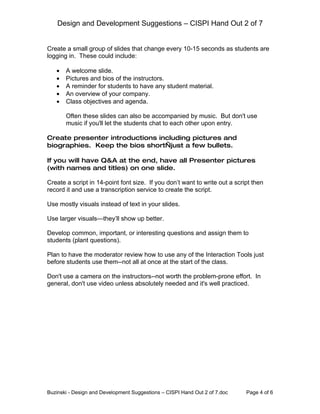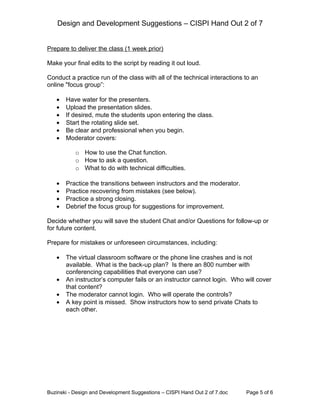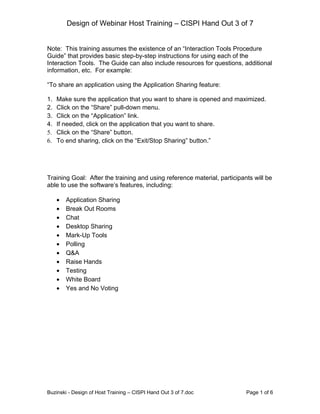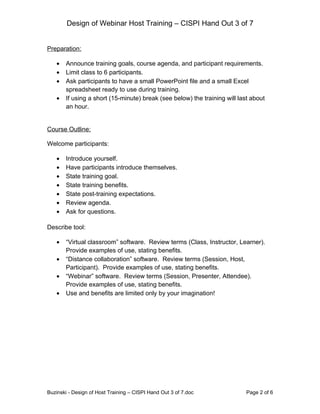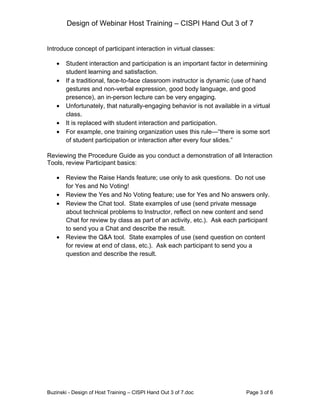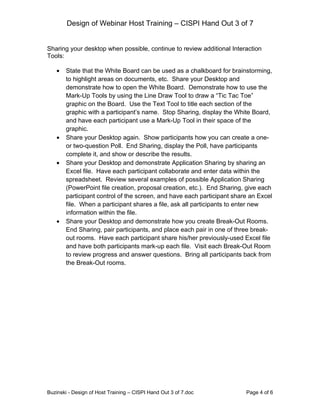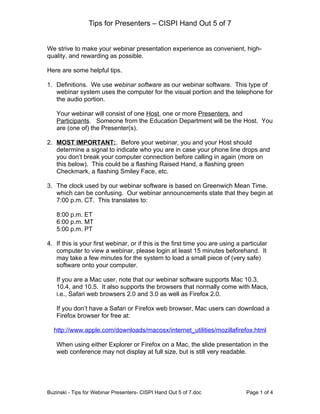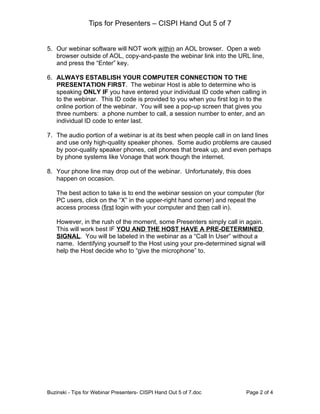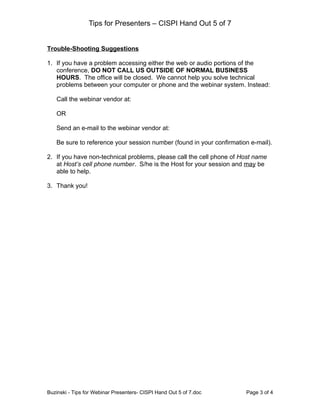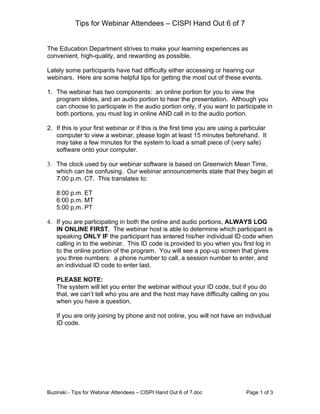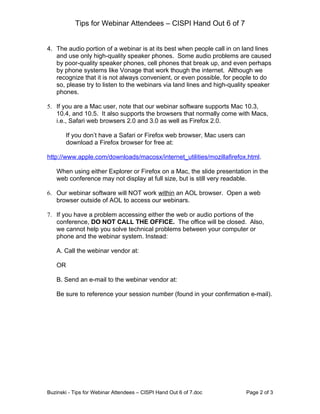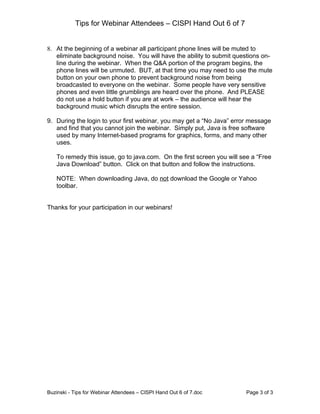This document outlines suggestions for designing training for webinar hosts. It recommends limiting classes to 6 participants and having them introduce themselves. The training should demonstrate how to use interaction tools like polling, chat, and application sharing. It suggests practicing with the tools, such as creating breakout rooms. The document provides an example practice assignment for participants to create a session using various tools. It concludes with reviewing the sessions and asking for feedback to improve hosting skills.



